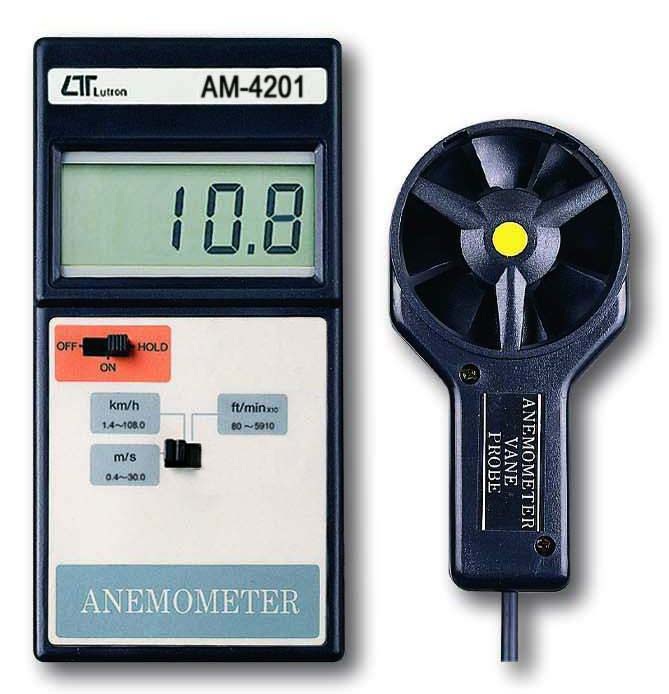Understanding Different Types of Anemometers for Various Applications
Understanding Different Types of Anemometers for Various Applications
Blog Article
Anemometers Revealed: Comprehending Their Relevance in Ecological Monitoring and Safety Procedures
The duty of anemometers in ecological tracking and safety actions is typically ignored, yet their value is obvious. These tools have a long history rooted in clinical questions and technical advancements, advancing to end up being crucial devices in different fields. From weather forecasting to air travel security, anemometers play a critical role in supplying accurate information that educates decision-making processes and improves general safety. Comprehending the details of anemometers reveals a globe of important insights that are essential to our understanding of the setting and the procedures we require to make certain safety and security.
Background of Anemometers
The advancement of anemometers can be mapped back to the old human beings where fundamental wind gauging devices were first made use of. One of the earliest known anemometers was the hemispherical cup anemometer created by Leon Battista Alberti in the 15th century.
In the 18th century, the prominent researcher John Thomas Romney Robinson introduced the Robinson anemometer, which featured 4 hemispherical mugs placed on straight arms that prolonged from a central axis. This style came to be a requirement in meteorological measurements because of its accuracy and integrity. For many years, innovations in technology resulted in the growth of more modern anemometers, including ultrasonic anemometers and laser Doppler anemometers, offering increased accuracy and effectiveness in determining wind rate and instructions. The history of anemometers showcases an impressive journey of innovation and development in the area of weather forecasting.
Kinds Of Anemometers
Throughout the area of weather forecasting, different kinds of anemometers have been created to properly determine wind rate and instructions. One of the most typical type is the mug anemometer, which includes three or 4 mugs mounted on horizontal arms that rotate with the wind. As the mugs spin, the speed at which they rotate is straight proportional to the wind speed. Another commonly made use of kind is the vane anemometer, which includes a tail or fin that aligns itself with the wind direction. This positioning allows the tool to identify the wind instructions. Sonic anemometers utilize ultrasonic signals to measure wind rate and direction precisely. They are commonly made use of in research study applications due to their high precision. Hot-wire anemometers run based upon the concept that the cooling impact of wind on a warmed cable is symmetrical to the wind speed. These anemometers appropriate for determining low wind speeds with high precision. Each kind of anemometer has its strengths and is selected based upon the particular needs of the tracking task available.
Applications in Meteorology
Having actually reviewed the numerous kinds of anemometers used in weather forecasting for determining wind speed and direction, it is necessary to explore their practical applications in the field. Anemometers play a vital role in weather forecasting by giving exact and real-time information on wind problems (anemometer). Meteorologists utilize anemometers to keep an eye on wind rate and direction to forecast climate patterns, problem cautions for extreme climate occasions like storms, storms, and hurricanes, and examine weather for aviation safety
In weather forecasting, anemometers aid in recognizing regional and local wind patterns, which are crucial for forecasting climate changes and figuring out weather fads. These devices are additionally made use of in study to research microclimates, metropolitan warm islands, and air pollution dispersion. Additionally, anemometers are used in agriculture to enhance plant administration methods, such as irrigation and pesticide application, based upon wind problems.
Value in Aviation Safety
An integral facet of making certain aviation safety lies in the precise tracking of wind conditions using anemometers. Anemometers play a crucial duty in air travel by providing real-time data on wind rate and direction, helping pilots in making educated decisions throughout take-off, touchdown, and trip. Solid and unforeseeable winds can substantially impact airplane operations, making it essential for aviation authorities to rely upon exact wind dimensions to make certain the safety about his and security of travelers and staff.

In the vibrant atmosphere of air travel, where even small adjustments in wind rate and direction can have profound impacts, anemometers stand as important tools for advertising safe and safe and secure air traveling.
Role in Environmental Research Study
Exactly how do anemometers add to developments in ecological research study? Anemometers play an essential function in environmental study by providing important information on wind rate and instructions. This information is crucial for understanding different climatic procedures, such as air pollution dispersion, climate patterns, and environment change. By accurately determining wind attributes, anemometers aid scientists analyze the movement of contaminants in the air, examine the effect of commercial exhausts, and predict the spread of contaminants in the environment.


Conclusion
In conclusion, anemometers have actually played a vital function in ecological tracking and security measures. Comprehending the importance of anemometers is essential for properly determining wind rate and instructions, which is important for forecasting look at these guys weather condition patterns, ensuring secure air travel procedures, and conducting ecological research studies.
One of the earliest well-known anemometers was the hemispherical cup anemometer developed by Leon Battista Alberti in the 15th century. Over the years, developments in modern technology led to the advancement of even more modern anemometers, consisting of ultrasonic anemometers and laser Doppler anemometers, using enhanced accuracy and effectiveness in gauging wind speed and instructions. Hot-wire anemometers run based on the principle that the cooling result of wind on a heated cable is proportional to the wind speed. Meteorologists use anemometers to check wind speed and instructions to anticipate weather condition patterns, concern cautions for extreme climate events like tornadoes, storms, and cyclones, and analyze atmospheric problems for aviation security.
Comprehending the value of anemometers is vital for accurately determining wind speed and instructions, which is important for anticipating weather condition patterns, making certain secure aviation operations, and carrying out environmental research studies. (anemometer)
Report this page